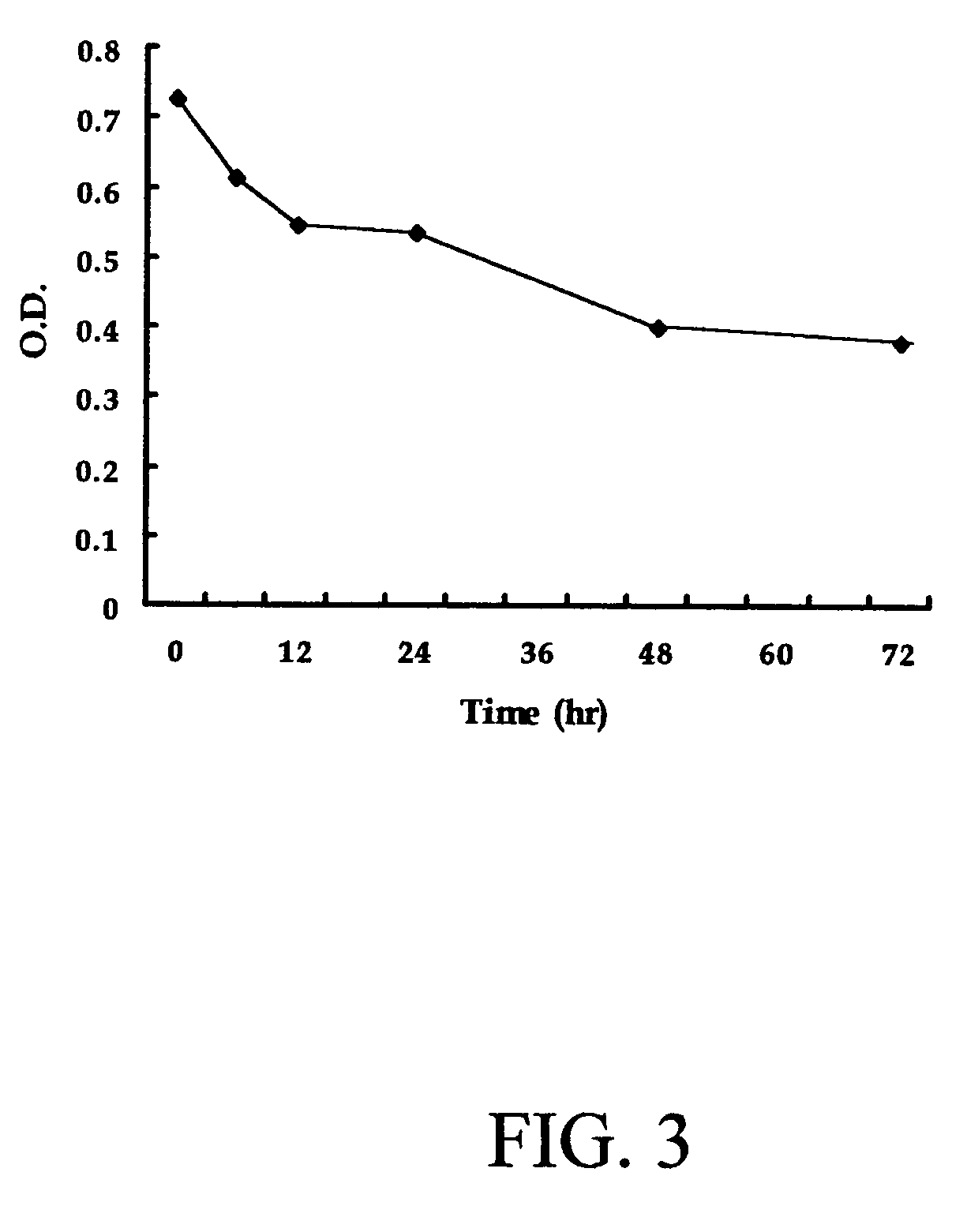In vitro assay for evaluation of angiogenic effects
a technology of angiogenic effect and in vitro assay, which is applied in the field of in vitro method of assaying angiogenic effect, can solve the problems of difficult operation, method using radioisotope, and inability to model the entire in vivo process
- Summary
- Abstract
- Description
- Claims
- Application Information
AI Technical Summary
Benefits of technology
Problems solved by technology
Method used
Image
Examples
example 1
In vitro Model
[0046] Three-dimensional collagen fiber gel: The dry collagen fiber was extract from tails of Sprague-Dawley (SD) rats. The fiber was dissolved in 1 N acetic acid solution in the concentration of 1 g fiber / 100 mL acetic acid. The dissolving was performed at 4° C. for 48 hours and followed by dialysis three times with 0.25 N acetic acid solution for 24 hours.
[0047] Endothelial cells: SD rats weighting 100 to 200 g were anaesthetized with 0.1 mL / 100 g body weight of barbiturate (Nembutal™, Abbott® Laboratories, USA) intraperitoneally. The thoracic aortas were cut and the connective tissues were removed. The vessels were further split into vessel rings thickening about 2 mm, and then cultured the rings in fresh Dulbecco's modified Eagle medium (DMEM) with 10% fetal bovine serum. The culture was maintained at 37° C. with 5% CO2 with changing the medium every two days. After cultured for 5 to 6 days, the cells were harvested. The endothelial cells suitable for the method ...
example 2
Assay for Angiogenesis Inhibitor Using the Angiogenesis Model
[0051] Assay: The models as obtained in Example 1 were added with 25 μM, 50 μM and 100 μM of ECGg (an angiogenesis inhibitor), respectively. The results were obtained by repeating several times of the assay.
[0052] Results: The inverted microscopic views of the models cultured for 48 hours were shown in FIG. 4. The model added with 25 μM EGCg showed to have less tubes and lower cell count (referring to FIG. 4a) than those added without EGCg (as a control), see FIG. 4c. The model added with 100 μM EGCg showed to have almost no tubes, see FIG. 4b.
[0053] The results of the absorbance measurement were given in FIG. 5. It showed that the model added with 25 μM EGCg had a little inhibitory effect on angiogenesis. In the model added with 50 μM EGCg, the collapse of the gel was nearly totally inhibited. In the model added with 100 μM EGCg, nearly no collapse was observed. It was evidenced that the degree of collapse of the three...
PUM
 Login to View More
Login to View More Abstract
Description
Claims
Application Information
 Login to View More
Login to View More - R&D
- Intellectual Property
- Life Sciences
- Materials
- Tech Scout
- Unparalleled Data Quality
- Higher Quality Content
- 60% Fewer Hallucinations
Browse by: Latest US Patents, China's latest patents, Technical Efficacy Thesaurus, Application Domain, Technology Topic, Popular Technical Reports.
© 2025 PatSnap. All rights reserved.Legal|Privacy policy|Modern Slavery Act Transparency Statement|Sitemap|About US| Contact US: help@patsnap.com



